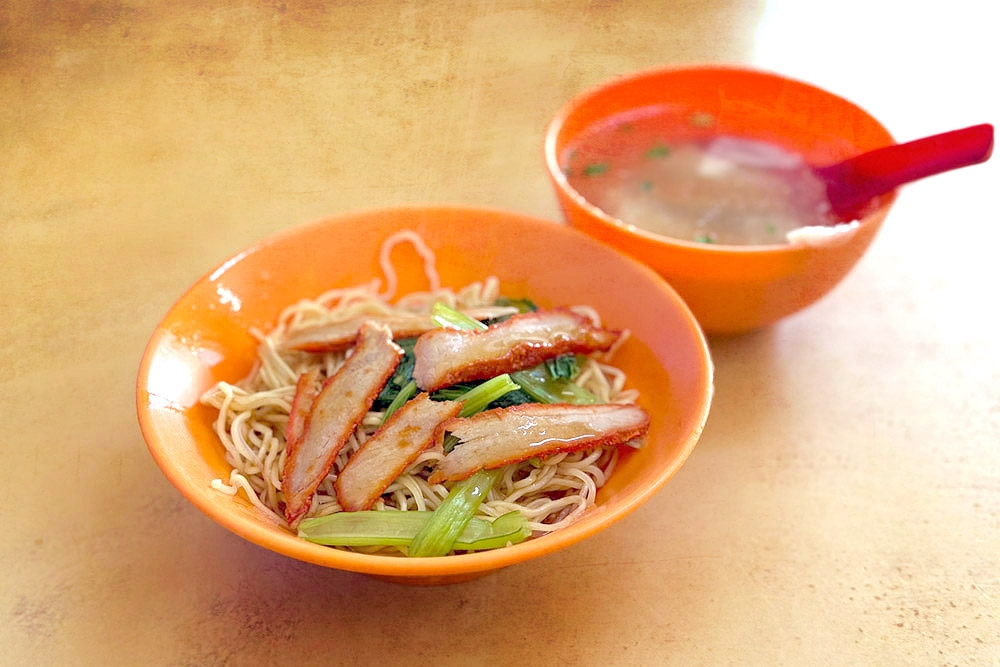MELAKA, Aug 2 — The bowl that lands before us speaks of another era. No heavy soy glaze settles at the bottom, no syrupy sheen disguises the taste of the noodles.
Instead, a light, savoury gravy clings to each springy strand, coaxing flavour without drowning it. Lean slices of Malaccan chasiu startle with their bright scarlet crust, while on the side, wantans wait in a clear mild broth.
This is true Melaka style wantan mee: modest, measured, and all the more memorable for it.
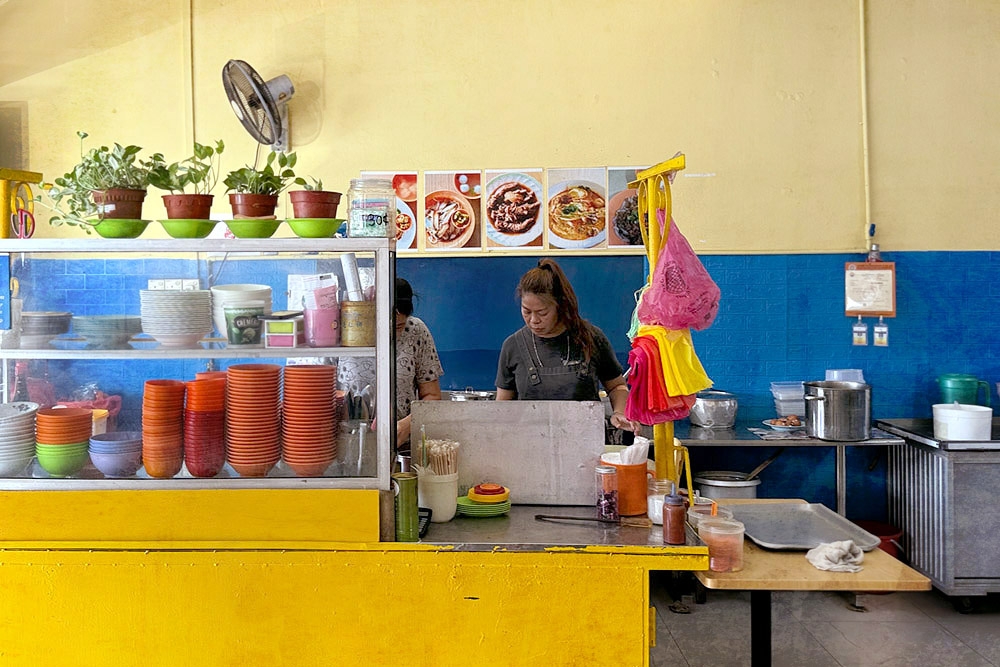
The interior is a bright clash of canary yellow and cerulean blue. — Picture by CK Lim
Ujong Pasir Lee Wan Tan Mee has been around long enough that whole families have grown up on its noodles. Some regulars recall afternoons in the 1960s when the shop was little more than a roadside stall.
Today, decades later, the essence remains intact. The interior is a bright clash of canary yellow and cerulean blue, walls that seem to throw the orange melamine bowls into even sharper relief. Plastic tables and stools fill the space.
The wantan mee remains the heart of the place. Each bite is anchored by the noodles’ elusive al dente chew, slicked with just enough aromatic oil and that clear, umami-rich sauce to satisfy without overwhelming.
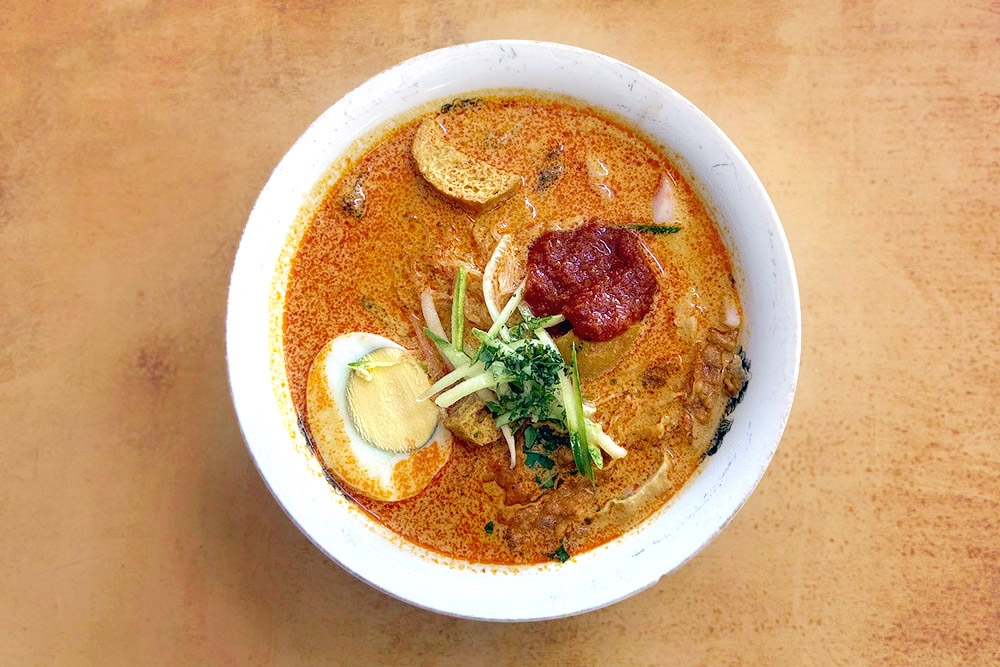
For a touch more richness, try their Nyonya ‘laksa’. — Picture by CK Lim
Wantans, served in their own delicate broth, are small yet generous: paper-thin skins holding pork filling seasoned with a quiet confidence. They offer a counterpoint to the noodles — light, almost palate-cleansing between mouthfuls.
The chasiu here is a holdover from another time. Its startlingly red edges speak of an older Malaccan style, where sweetness comes not from caramelised fat or burnt sugar but from a careful marinade that enhances the meat rather than overpowers it. Leaner than the chasiu many expect, it’s an approach that privileges balance over indulgence.
The menu is small but there are other noodle options, such as koay teow and beehoon, that carry the same toppings and aromatic sauce as the wantan mee.
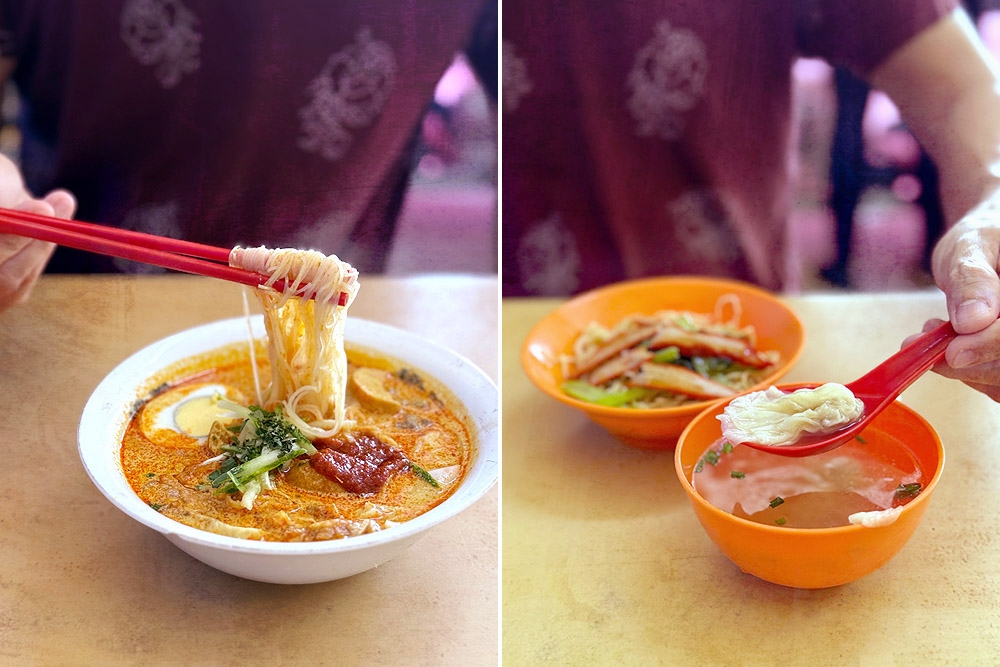
Be it soupy or saucy, the noodles here are so slurp-worthy. — Picture by CK Lim
For those who prefer their noodles with a touch more richness, however, try their Nyonya laksa. Our bowl arrives with a broth that comforts rather than scorches: any fiery heat smoothed by the santan (coconut milk).
The aroma is that of lemongrass and galangal. Fine rice noodles soak up the soup, accompanied by seehum (blood cockles), taupok (tofu pouches), bean sprouts and a hard-boiled egg. Each mouthful is a gentle, creamy caress.
Be it soupy or saucy, the noodles here are so slurp-worthy and absolutely divine. Oh, for those who desire a little extra, the braised chicken feet are collagen-rich and full-flavoured, the meat clinging stubbornly to bone until coaxed free.
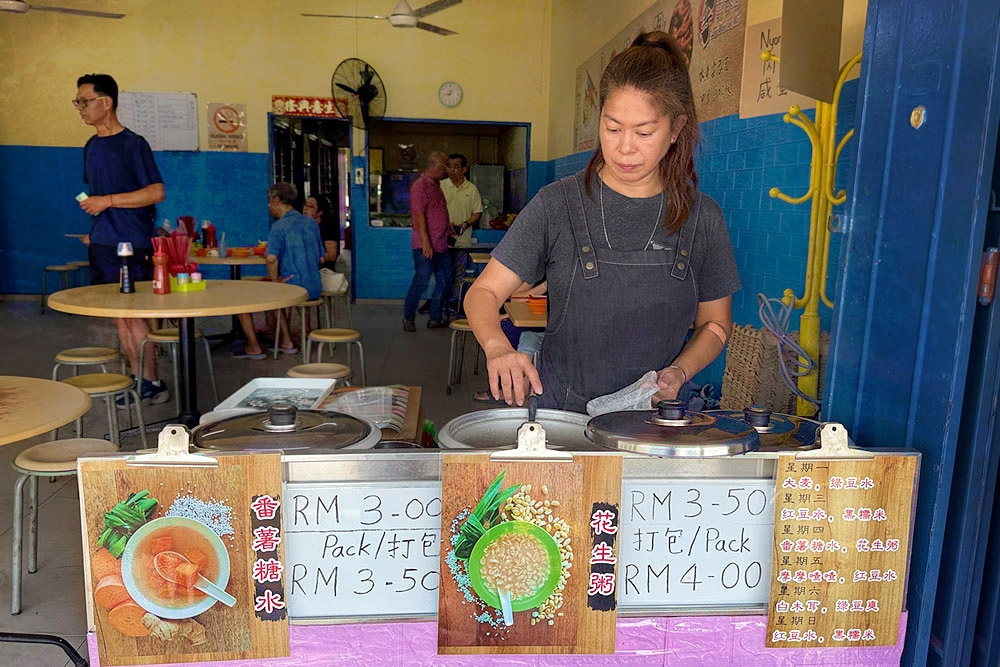
The ‘tong sui’ station at the shop’s entrance. — Picture by CK Lim
For those who linger, there is comfort to be found in the rotating selection of Cantonese sweet soups at the tong sui station at the shop’s entrance. Today’s tong sui is a choice between sweet peanut soup and sweet potato soup.
The former carries a mellow nuttiness, the result of peanuts simmered until they give up all resistance, their richness softened by sugar. The latter tastes of sunlight, the broth honeyed by orange-fleshed sweet potatoes that have collapsed into strands, the warmth of ginger threading through each sip.
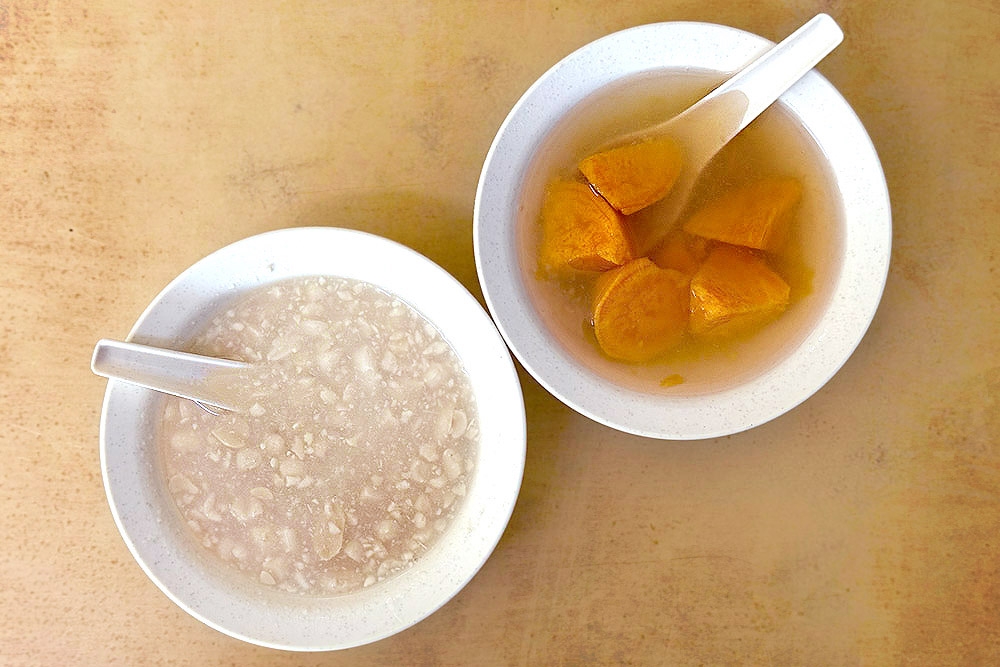
Sweet peanut soup and sweet potato soup. — Picture by CK Lim
By the counter, an assortment of Nyonya kuih tempts passers-by. Ang koo kuih gleam in colourful shades of crimson, gold and inky purple, their glossy shells giving way to chewy skins and sweet fillings.
Next to them, neat rolls of pandan-green kuih ketayap cradle sweet coconut, golden slabs of kuih bingka ubi glisten faintly with caramelised edges, and tidy squares of pulut tai tai, tinted blue by butterfly pea flowers. All are boxed and ready for takeaway; the tough part is choosing which to bring home.
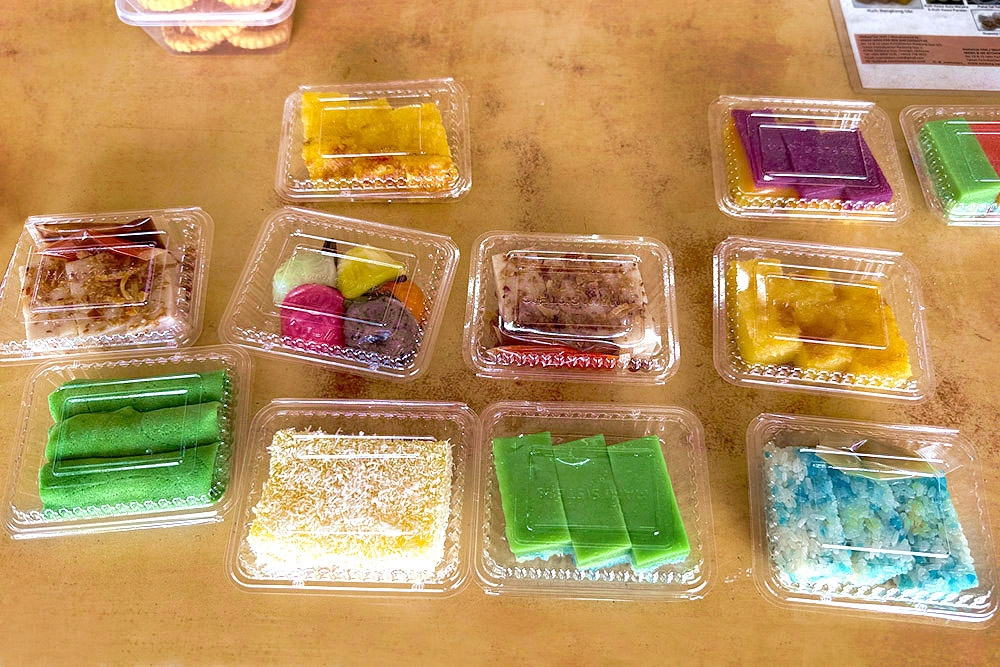
An assortment of Nyonya ‘kuih’. — Picture by CK Lim
Dropping by Ujong Pasir Lee Wan Tan Mee feels like stepping back into another era, where familiar recipes and unchanging flavours quietly endure. In a world that never stops moving, it offers a rare constancy — meals that taste as they always have, carrying the comfort of memory in every bite.
We don’t come here simply for a place to eat; we come here for a taste of home.
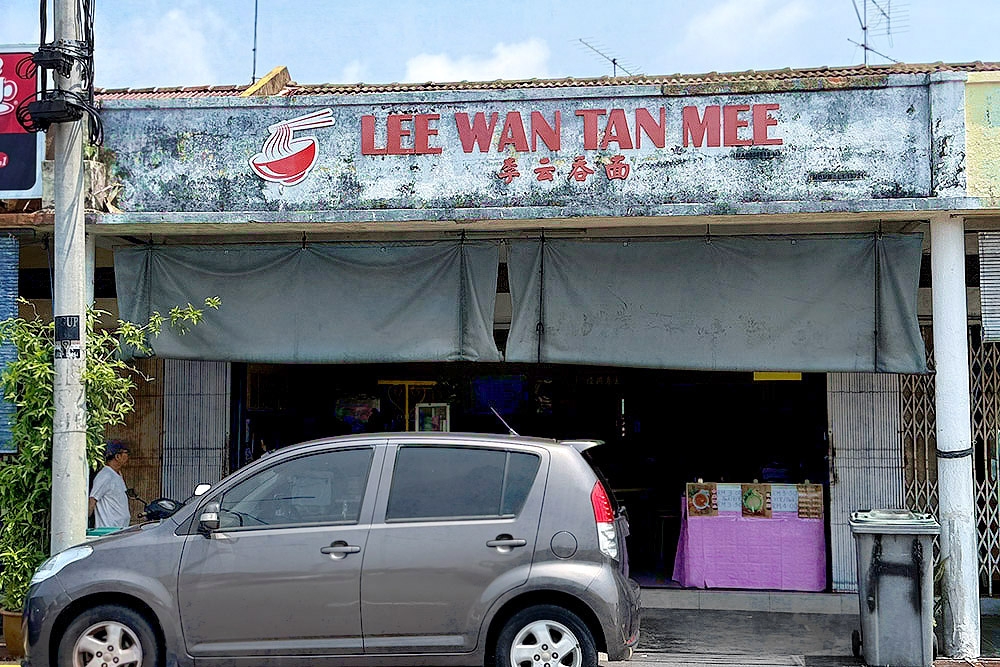
Dropping by Ujong Pasir Lee Wan Tan Mee feels like stepping back into another era. — Picture by CK Lim
Ujong Pasir Lee Wan Tan Mee
360H, Jalan Low Hee Kong,
Taman Teratai,
Ujong Pasir, Melaka.
Open Wed–Mon 7am–3pm, Tue closed
Phone: 012-652 9499
* This is an independent review where the writer paid for the meal.
* Follow us on Instagram @eatdrinkmm for more food gems.
